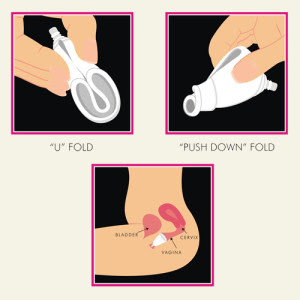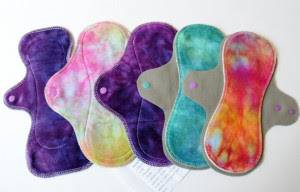About Tampons
What is something that every woman has to endure in her lifetime? You got it, a menstruation cycle. On average a woman will have her period once a month, for about 5 days, for around 40 years of her life! During this time, we need to use various products stay clean and fresh. There has got to be a market in there! The Tampon and Pad industry is a $718 Million dollar market, and tampons and pads are necessities. This got me questioning the production and ethical value behind these products.
They are mass-produced, and heavily marketed and cheaply made, out of bleached rayon and plastics. Why is it that we never see ads for the much safer alternatives such as cotton products, reusable washable pads and menstruation cups? Any of these alternatives are much more economical and are about a gillion times safer for the environment. Up until a few months ago, I didn’t even know that there were alternative products, or even think that there was any potential risk from using generic menstruation products.
Almost all sanitary napkins and tampons are made with bleached rayon, cotton and plastics, how safe do you think that material is to be inside or very close to your Vagina? Not to mention these products leave behind fibers in your vagina that can cause bladder, vaginal infections, and Toxic Shock Syndrome. Tampons are also known to absorb the natural fluids and bacteria’s that the vagina produces to stay clean and healthy.
Let’s look at the #1 ingredient in generic tampons and sanitary napkins: Rayon. Rayon is a fiber that is made from cellulose fibers, cellulose is a natural fiber, but to produce Rayon chemical procedures are needed that include: carbon disulphide, sulfuric acid, chlorine and caustic soda.
Side effects from exposure to too much Rayon can include: nausea, vomiting, chest pain, headaches and many others. Rayon is not just found in tampons and pads, but a lot of clothes are made from it as well. Sanitary napkins also contain quite a bit of plastic, which does not allow sufficient air flow ‘down there’ so in turn can also cause an array of infections. Tampons and pads are also bleached using chlorine, which results in the production of dioxin, which is linked to breast cancer, endometriosis, immune system suppression and various other ailments.
So, what are our options?
 A menstrual cup is my first choice for a tampon/ pad alternative. It is a flexible silicone cup that is inserted into the vagina. Essentially this cup catches all the blood and you empty it every 12 hours during your cycle and reinsert it. I know what you are thinking… gross. That’s what I thought too; my initial thought was that this sounded so disgusting that I would never use it
A menstrual cup is my first choice for a tampon/ pad alternative. It is a flexible silicone cup that is inserted into the vagina. Essentially this cup catches all the blood and you empty it every 12 hours during your cycle and reinsert it. I know what you are thinking… gross. That’s what I thought too; my initial thought was that this sounded so disgusting that I would never use it I guess that changed as I researched all of the positive effects that came from using a cup. If it is properly inserted and taken out there is no reason that you should ever have to actually touch blood, but even if you do, what’s the harm? Just wash your hands, you big baby.
I guess that changed as I researched all of the positive effects that came from using a cup. If it is properly inserted and taken out there is no reason that you should ever have to actually touch blood, but even if you do, what’s the harm? Just wash your hands, you big baby.
It may take a few cycles to get the hang of how to use one of these cups, but once you do you will wish you had started a lot sooner! I recommend that you continue to use pads or liners until you have mastered the insertion technique, just in case. Not only will you save a lot of money using a menstruation cup, but you will be doing a huge favor to the environment as well.
Think about it, If an average women uses about 17,000 pads or tampons during her entire menstruation period, x that by 3.5 billion women in the world, and yeah, you do the math…. Another great thing about using menstrual cups is that many women have reported to having less severe cramping during their period! I know that alone would encourage some women to making this change. Some brands of menstrual cups are: ‘DivaCup,’ ‘MoonCup,’ ‘Ladycup’ and ‘Lunette,’ among many others.
There are also reusable pad products are made of safe materials that come with washable highly absorbent inserts to suit all different levels of flow. These would be a great option to women that do not like to products that you have to insert. These reusable ‘pads’ are made with safe breathable materials to keep your area healthy, and leak free! Some brands that are available today are: ‘Luna Pads,’ ‘Glad Rags,’ ‘Pleasure Puss’ and you can also make your own. Now, if you are just not so keen on ever having to really see blood or wash your products, or don’t like these options there is another option, sit in a lake for your entire cycle. You will eventually come out very cold and wrinkled, but at least you won’t be throwing away tons of crap into the environment and you don’t have to worry about toxic chemicals being leached into your body…. Just kidding!
Now, if you are just not so keen on ever having to really see blood or wash your products, or don’t like these options there is another option, sit in a lake for your entire cycle. You will eventually come out very cold and wrinkled, but at least you won’t be throwing away tons of crap into the environment and you don’t have to worry about toxic chemicals being leached into your body…. Just kidding!
OK, there is one last alternative to generic tampons and pads. There are some companies that make natural organic cotton products that do not leach chemicals, and do not leave synthetic materials behind. These can still absorb your natural fluids and they are still not the best things for the environment, but at least cotton is a more natural substance that can biodegrade much quicker and safer. Some brands of these products are: ‘Seventh Generation,’ and ‘Natracare.’
So there you have it! I hope that this article opened up your eyes to the health effects and environmental hazards that are associated with using pads and tampons, and made you reconsider what products that you are using. There are many websites that provide information with reviews on all of these products, do your research and find what’s best suited for you and your lifestyle.
If you are worried about how much fluid menstruation cups can hold in comparison to tampons and pads check out this video.
Much Love



